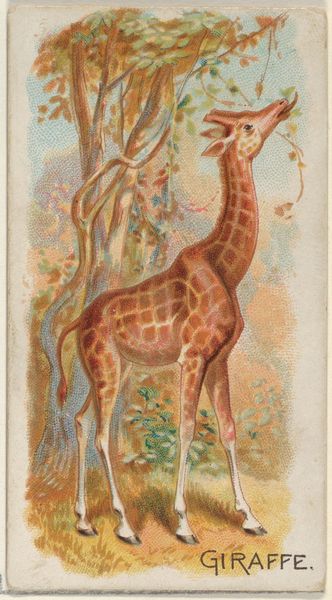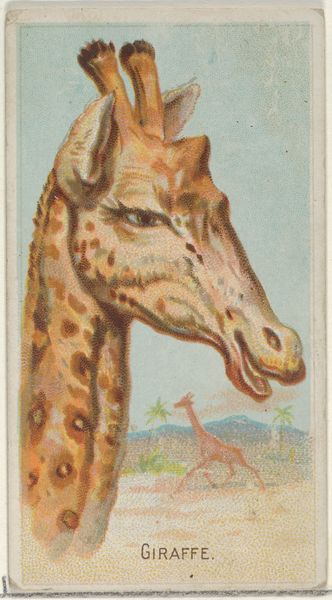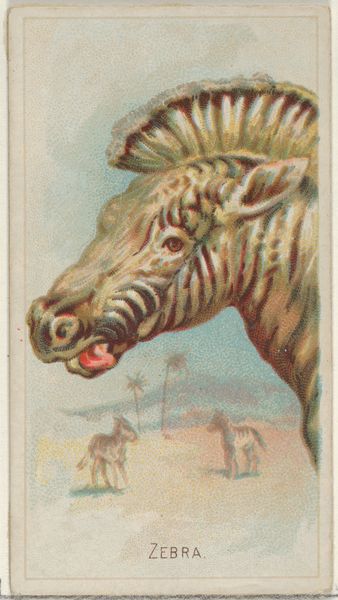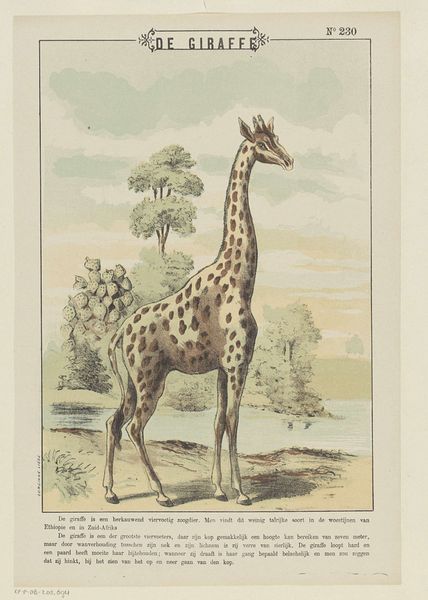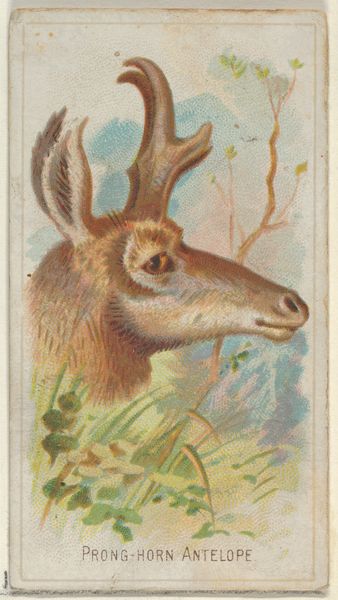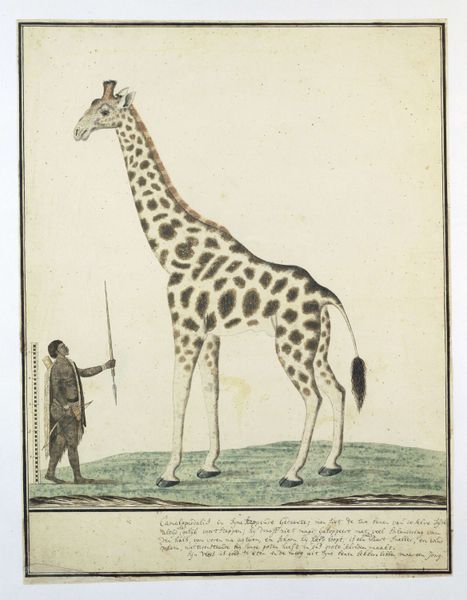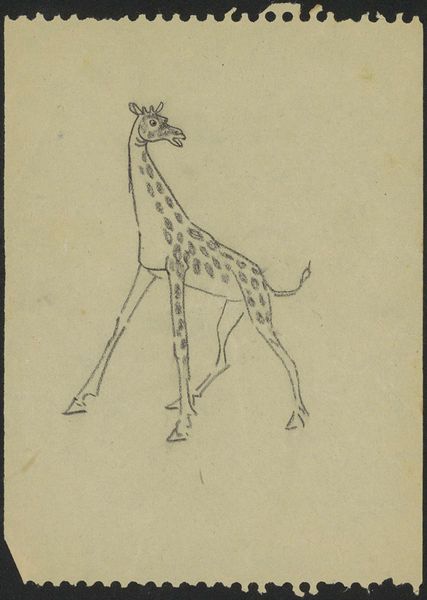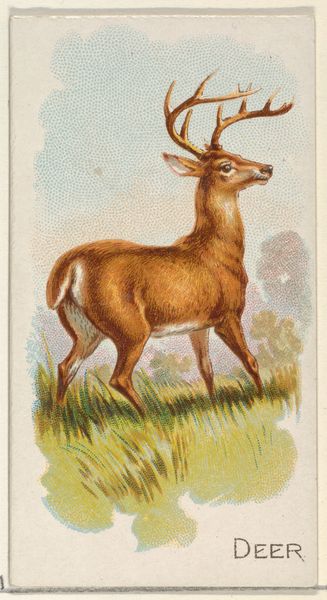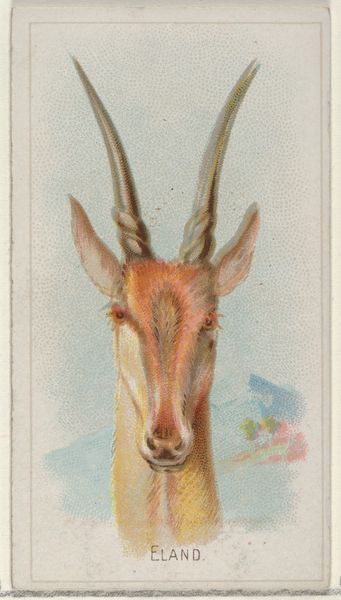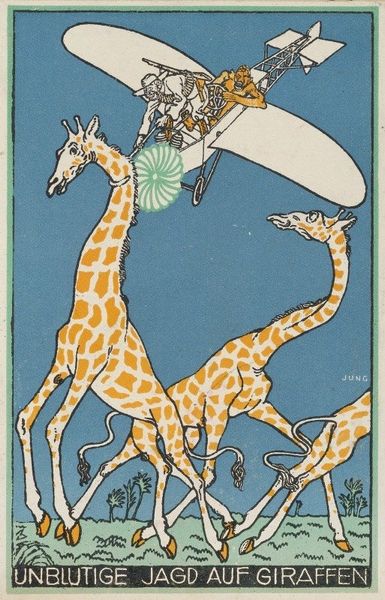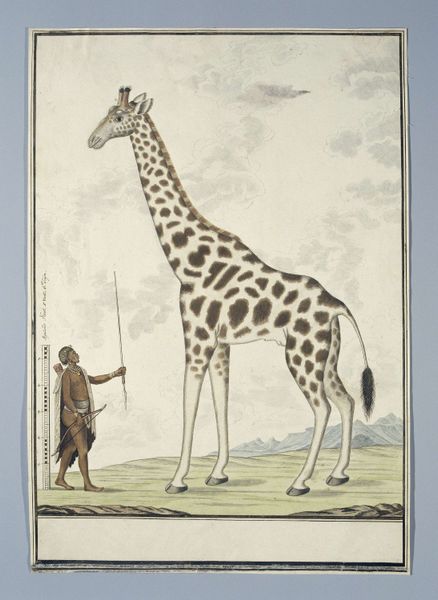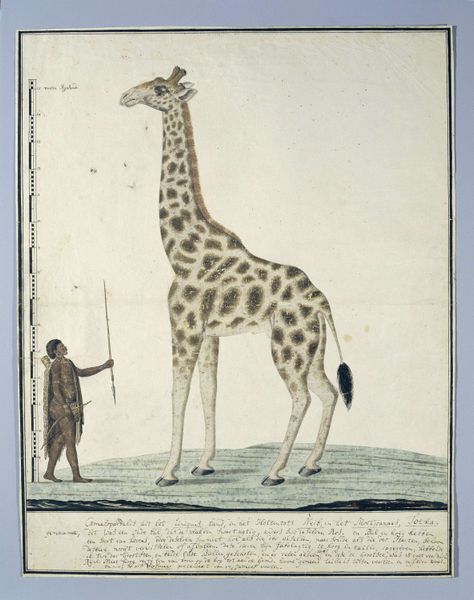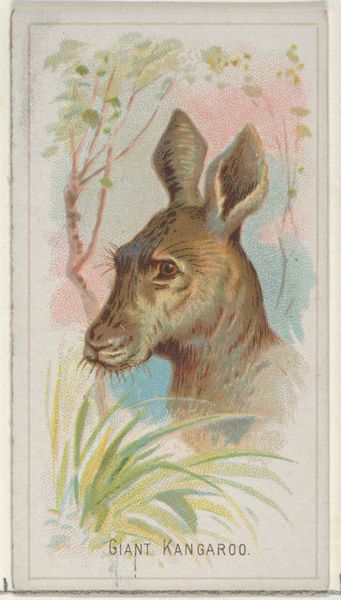
Giraffe, South African, from the Animals of the World series (T180), issued by Abdul Cigarettes 1881
0:00
0:00
# print
#
coloured pencil
#
watercolour illustration
#
watercolor
Dimensions: Sheet: 2 3/4 × 1 5/8 in. (7 × 4.2 cm)
Copyright: Public Domain
Curator: Here we have "Giraffe, South African, from the Animals of the World series," a print made in 1881 by Abdul Cigarettes. What are your immediate thoughts? Editor: It's surprisingly delicate! There's an unexpected gentleness in the way the artist captured the giraffe, which belies its imposing size. Curator: Indeed! I find it interesting how this image, intended for mass consumption as part of a cigarette card series, employs watercolor and colored pencil. This brings up questions about labor, skill, and accessibility of art in 19th century production. Was art created as part of a commercial product still considered "art" at the time? Who was making them, and under what conditions? Editor: The giraffe, reaching for the tree's branches, feels almost allegorical. Its upward gaze represents ambition or aspiration. And the tree itself--it’s an age-old symbol for wisdom, life, and connection to the earth. Maybe, within this simple image, there’s an appeal to humanity’s yearning to bridge the divide between the mundane and the sublime. Curator: I’m compelled by how it challenges our notions of fine art. The "high art" techniques, the accessible distribution of these images with a pack of cigarettes reveals how interconnected artistic practice and commerce truly are. How labor and artistic processes were commodified and distributed is quite striking. Editor: I notice the use of pictorialism is very powerful in conveying its theme and style. The composition invites us to interpret how knowledge is passed on and interpreted. Also the artist use of "Japonisme" makes the giraffe blend subtly into the tree's backdrop, symbolizing adaptability or assimilation in its environment. Curator: Your analysis highlights how cultural values around the environment are symbolized. Now it makes one wonder what statements can we derive from these materials given its commercial production in its time. Editor: Thinking about it, the artist is really taking advantage of our desire for more. I suppose now that this dialogue can add depth and resonance to appreciating works like these.
Comments
No comments
Be the first to comment and join the conversation on the ultimate creative platform.
